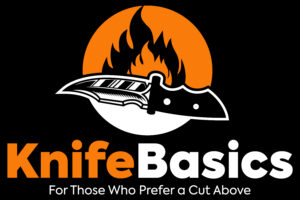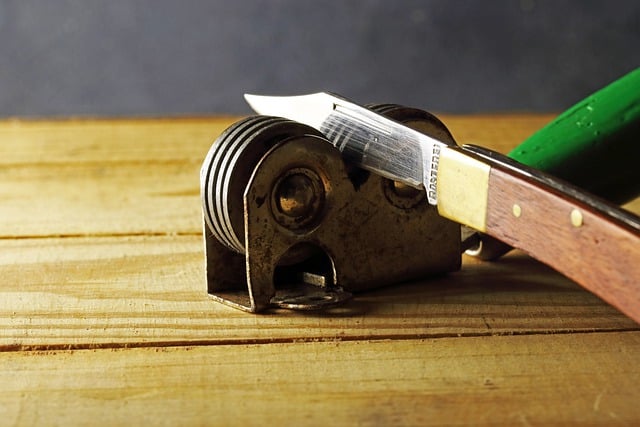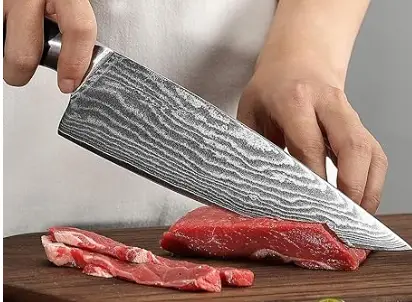A daily instrument that has been absolutely essential throughout human history is a knife. From its modest origins as basic stone tools to the elegant and complex forms of contemporary kitchen blades, the development of knives is an intriguing path. The varied universe of knives will be discussed in this post, with an eye toward ancient civilizations and historical evolution.
From Stone Age daggers to ceremonial blades from ancient Egypt, knives were emblems of power, position, and workmanship as much as useful instruments. The technology behind knife-making evolved together with civilization. Metal blades first appeared during the Bronze Age; iron and steel blades first emerged during the Iron Age.
By now, we are surrounded by a wide range of knives catered to certain jobs. From a pocket knife for outdoor excursions to a chef’s knife for culinary accuracy, every design has a different use.
Come explore with us the intriguing history of knives and learn about their creative inspiration and ancient beginnings. Find the creativity and workmanship that have molded knife development throughout millennia.
early knife designs:
From stones tools to flint knives
Originally simple implements fashioned from stone, knives were Early knife designs have their roots in the Stone Age, when our predecessors first found it possible to shape and polish stones. These stone knives were used for chopping meat, cooking, and making other tools; they were very necessary for survival. Given their rudimentary character, these knives were regularly replaced rather than honed.
The technology behind knife-making developed with human civilization. The discovery of flint, a hard, sharp-edged stone, transformed knife designs. More exact cutting and shaping was made possible by Flint knives’ sharpness and durability over its predecessors. Further Bronze Age advances were made possible by these developments in knife-making processes.
The Bronze Age: Developments in methods of knife manufacture
Knives made a major design and utility advance at the start of the Bronze Age. For knife blades, bronze—an alloy of copper and tin—offered a stronger and more resilient material. This made longer-lasting blades able to handle more difficult jobs possible.
Knives evolved at this time from just useful instruments to more than that. They came to represent craftsmanship, prestige, and power. Often used in religious events and as esteemed presents, elaborately decorated bronze knives These blades’ exquisite patterns and workmanship highlighted the ability and inventiveness of bygone craftspeople.
From blades to daggers, the Iron Age
As iron and steel superseded bronze as the main materials for blade-making, the Iron Age represented yet another turning point in the development of blades. Sharper and more durable, iron blades were perfect for hunting and warfare. The arrival of iron and steel also helped to produce bigger, more powerful swords and daggers.
Knives were tools as well as weapons throughout this age. While they were great weapons in battle, they were indispensable for everyday chores such chopping, cooking, and cleaning. These knives’ designs changed to fit certain purposes; blades became longer and more pointed to maximize their fighting efficacy.
Medieval knives: Use and symbolism
Knives were still indispensable instruments for daily life in the Middle Ages. Among the other chores they performed were eating, woodworking, and self-defense. Still, knives during this period also had great cultural and symbolic value. They often connected with social hierarchy, justice, and authority.
Common accessories and clearly visible as a status signal were knives. With elaborate handles and well-made blades, medieval knives symbolized the riches and power of their owners. These blades were pieces of beauty as well as useful implements that highlighted medieval era workmanship and creative sensibility.
Renaissance: elegant and ornate knife designs
Knives were not an exception; the Renaissance brought back enthusiasm in arts and crafts. With handles covered in valuable metals, jewels, and delicate engravings, knife designs become even more complex and ornamental. Often regarded as valuable items, these knives were on show as evidence of the owner’s taste and fortune.
Knives also acquired a new use as meal utensils during this period. Improved eating manners brought to the development of specific blades for various food products. Meat was carved with curved blade knives; delicate delicacies were picked up with pointed tip knives. These knives’ design aimed for both looks and utility.
Industrial revolution: Mass-produced knives’ arrival
The industrial revolution changed knife manufacture in many ways. Mass manufacturing methods and technologies let knives be more easily available and reasonably priced than they have ever been. Because anybody from all walks of life could now afford to have a knife, knife ownership became more democratic.
Mass manufacturing let knife designs be standardized as well. With an eye on utility and efficiency, knives become more consistent in form and size. Famous knife designs like the chef’s knife and folding pocket knife first emerged during this time and are still in use today.
Designed modern knives: innovation and functionality
Modern knife designs have been changing to fit certain jobs and user preferences. From culinary knives for professional chefs to survival knives for outdoor enthusiasts, blades nowadays are customized to fit many vocations and interests. Innovation, ergonomics, and utility take the stage.
Furthermore, greatly affecting knife design have been developments in materials technology. High-performance alloys and stainless steel have improved knife durability, corrosion resistance, and maintenance ease. Modern manufacturing methods include laser cutting and CNC machining have also made knife manufacture more consistent and precise.
An active pastime is knife collection and admiration
Along with influencing their design and use, knife development has produced a vibrant pastime of knife collecting and admiration. Collecting and trading knives, knife aficionados value them for their historical importance, workmanship, and original designs all around.
Along with knives from certain eras or areas, knife collectors frequently search for rare and limited-edition blades. They value their collections and the creativity and workmanship required in producing a well-designed knife.
Online groups, events, and knife displays provide collectors venues to highlight their most valuable items and network like-minded others.
- 【Exclusive Built-in Sharpener】Kitchen knife set with sharpener is amazing. The self-sharpening block keeps the knives razor sharp effectively. It saves you from having to honing blades on a sharpening steel.
- 【Premium Knife Set】Made of forged, high-carbon one-piece German stainless steel, this cutlery knife block set is tarnish-resistant and rust-resistant. The knife set is well-made with a nice appearance. They are sharp, durable, and have good weight and balance, providing effortless cutting. Perfect for both professional chefs and beginner.
- 【Easy to Clean Up】: The kitchen knife set with block is easy and fast to clean. Hand-wash for best results. The blades are stainless and rust-free after going through washing.
- 【Easy to Store】: All knives are stored safely in the knife block with built-in sharpener for space efficient storage. The block is easy to clean and maintain. It is durable and doesn't take up too much space on the counter. Made of natural rubberwood,this wooden kitchen knife block is strong and sturdy to hold heavy knife sets and is finished with a beautiful veneer that’s naturally resistant to grime and easy to wipe clean
- 【Best Sharp Knife Set】Optimized weight and good balance make this kitchen knife set fit nicely in the palm of hand. Exclusive taper grind edge technology provides optimum sharpness for precise cutting and is easy to re-sharpen. The knives are sturdy and can handle heavy chopping. The knives set stays sharp even after extended use.
- Multipurpose Knife Set: This kitchen knives set includes 8" Chef Knife, 8" Slicing Knife, 7" Santoku Knife, 8" Serrated Bread Knife, 5" Utility Knife, 3.5" Paring Knife, Kitchen Shears and 6 pcs Blade Guards
- Anti-rust coating: The healthy anti-rust coating protects the knife from oxidation and dishwasher safe, while the non-stick coating ensures the blades stay clean all day long
- Easy to carry: Each knife comes with a blade guard for safe, compact storage in your kitchen cupboard. These knives are also easy to carry when camping or storing in your RV
- Perfect Holiday Gift: Ideal for kitchen enthusiasts or new cooks, this knife set meets all cooking needs. It makes an excellent holiday gift for family, friends, lover and colleague
- Lifetime Warranty: Every knife set is backed by rigorous quality inspection, we provide a lifetime warranty for every customer, ensuring superior customer service and peace of mind with every purchase
- ULTRA-SHARP BLADES: Superior professional-level sharpness that ensures precision cutting.
- THE LAST KNIFE YOU’LL EVER NEED TO BUY: German Engineered Knife Informed by over 100 Years of Mastery. HENCKELS knives are built to last.
- EFFORTLESS CUTTING: Enjoy easy cutting with minimal effort with this lightweight, easy-to-use knife.
- SET INCLUDES: 3-inch paring knife, 5-inch serrated utility knife, 7-inch santoku knife hollow edge, 8-inch chef's knife, 8-inch bread knife, 4.5-inch steak knife set of 6, professional honing steel, kitchen shears, and hardwood knife block
- QUICK CLEAN UP: No-fuss cleanup, in the dishwasher or by hand. Stain and rust-free blades.
In the end: The legacy knives provide for human civilization
Knives’ development across time is evidence of human adaptation, creativity, and workmanship. From their simple origins as stone tools to the most sophisticated and creative designs of today, knives have been absolutely vital in human society.
For survival, combat, and daily life as well as for knives have been indispensable instruments. They have stood for craftsmanship, power, and rank. They have seen the birth and fall of civilizations, technological developments, and human cultural growth.
It is clear that knives will live on even as we adopt fresh materials, technology, and design philosophies. They will keep developing to fit the evolving demands and tastes of next generations. Knives’ trip is far from over, and we will be fascinated and grateful for it always.






